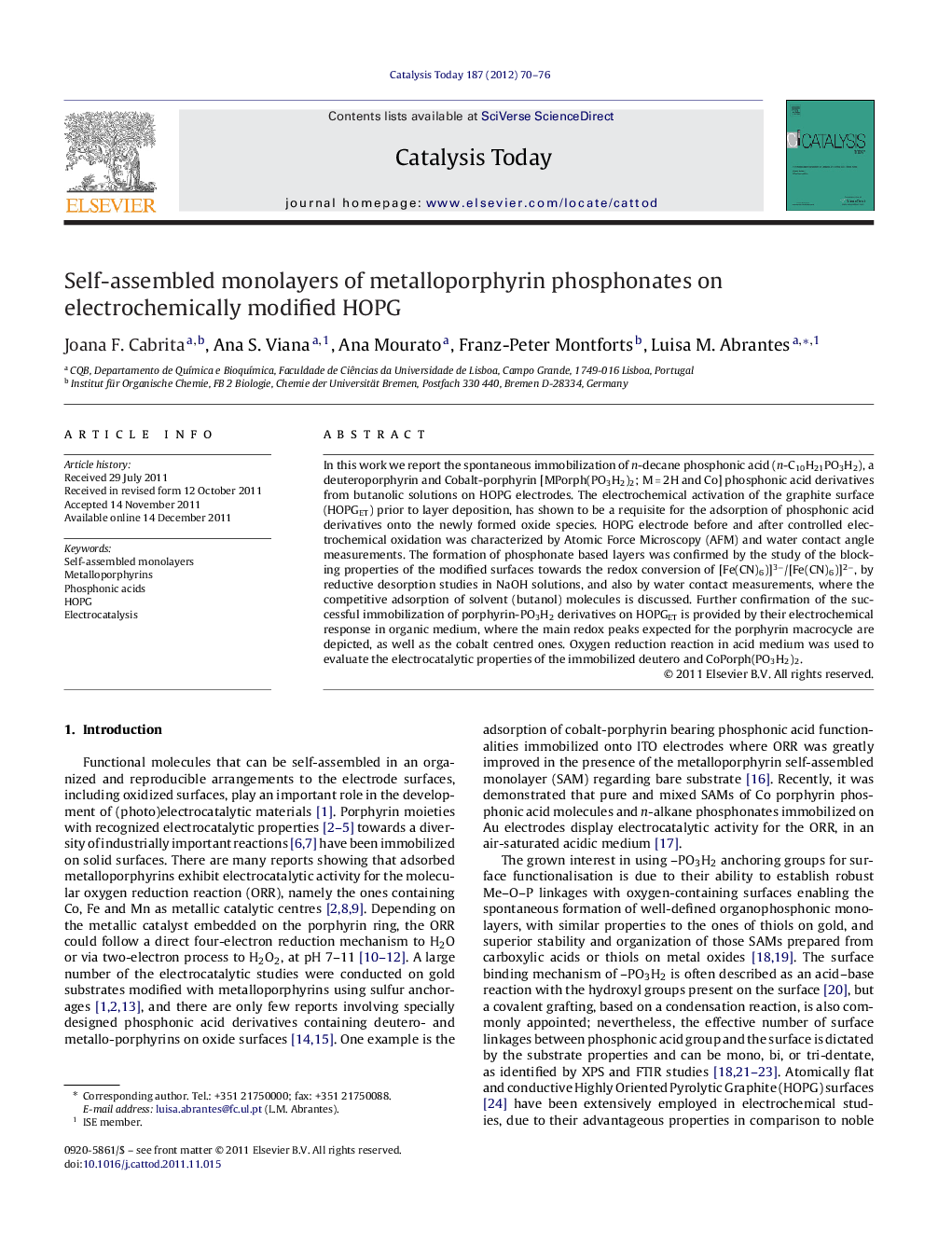| Article ID | Journal | Published Year | Pages | File Type |
|---|---|---|---|---|
| 55383 | Catalysis Today | 2012 | 7 Pages |
In this work we report the spontaneous immobilization of n-decane phosphonic acid (n-C10H21PO3H2), a deuteroporphyrin and Cobalt-porphyrin [MPorph(PO3H2)2; M = 2H and Co] phosphonic acid derivatives from butanolic solutions on HOPG electrodes. The electrochemical activation of the graphite surface (HOPGET) prior to layer deposition, has shown to be a requisite for the adsorption of phosphonic acid derivatives onto the newly formed oxide species. HOPG electrode before and after controlled electrochemical oxidation was characterized by Atomic Force Microscopy (AFM) and water contact angle measurements. The formation of phosphonate based layers was confirmed by the study of the blocking properties of the modified surfaces towards the redox conversion of [Fe(CN)6)]3−/[Fe(CN)6)]2−, by reductive desorption studies in NaOH solutions, and also by water contact measurements, where the competitive adsorption of solvent (butanol) molecules is discussed. Further confirmation of the successful immobilization of porphyrin-PO3H2 derivatives on HOPGET is provided by their electrochemical response in organic medium, where the main redox peaks expected for the porphyrin macrocycle are depicted, as well as the cobalt centred ones. Oxygen reduction reaction in acid medium was used to evaluate the electrocatalytic properties of the immobilized deutero and CoPorph(PO3H2)2.
Graphical abstractFigure optionsDownload full-size imageDownload high-quality image (161 K)Download as PowerPoint slideHighlights► Phosphonic acids adsorb spontaneously on electrochemically oxidized HOPG. ► Deutero and Coporphyrin-PO3H2 preserve their electroactivity in organic medium. ► HOPG/Coporphyrin-PO3H2 is electrocatalytic for O2 reduction reaction.
